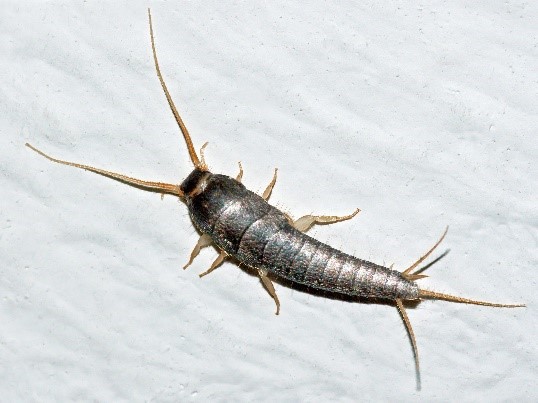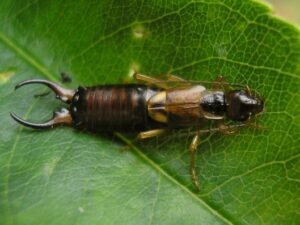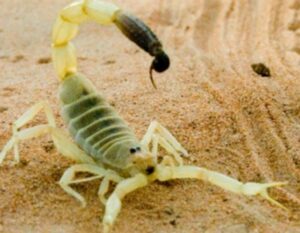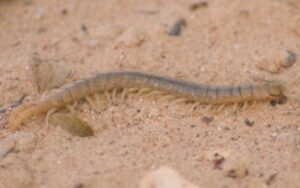Silverfish
Common Silverfish
General Description
| · Silverfish are among the most common household insects around the world.
· Silverfish is also called Hairy Tail. · Adults are very small, oblong, wingless insects, and range from 1.3 to 2.5 cm in length. · The antennae are long and slender.
|

Credit: Christian Fischer |
- The body is flattened, long and slender, broad at the front and tapering gradually toward the rear. The body is covered with soft scales that give the insect a shiny appearance.
- At the end of the body there are three long appendages (two pairs of anal horns and one medial). These give rise to the common name “bristletails.”
- The mouth parts are biting, and the antennae are long threadlike antennae consisting of several segments. Compound eyes are small. The firebrats are gray or brownish.
- The young look like small adults, and their development takes place by gradual metamorphosis.
- Eggs are oval-shaped, whitish, about 0.8 mm long,
Life Cycle and Common Characteristics
- Silverfish are most active at night and can run very swiftly.
- They are found almost anywhere in a house, especially in areas of high moisture close to their source of food.
- After mating, females lay eggs in protected areas or near food sources, such as behind baseboards, in small clumps of 2-10 eggs. They usually lay fewer than 100 eggs in their lifetime.
- Eggs hatch in about 30 days into nymphs, depending on temperature and humidity.
- Adults live for about 3 months.
- Insects have the ability to molt continuously, and the number of molts during their lifetime may reach 60 molts.
- They live in warm places like kitchens and laundry rooms, around ovens, boilers, and hot water pipes, and they are also found in storage rooms.
- They hide in cracks and corners of wood, especially damp ones, behind cupboards and pictures, on wooden floors, under plant leaves, dry grass, stones, and in the soil. The spread of the second type increases in damp places, such as in basements, toilets, and adjacent rooms.
- Nocturnal insects, flee quickly when they sense danger and avoid light, and their activity increases in summer.
- Silverfish eat a wide variety of foods containing proteins or carbohydrates.
- Silverfish can survive for long periods of time without food, including rolled oats, dried beef, flour, starch, paper, cotton, some synthetic fibers, sugar, beef extract, dead insects, glue, paste, and linen.
- They have the ability to digest cellulose.
- Silverfish are unable to reproduce, or even to survive in buildings where winter heating and moisture loss result in low relative humidity.
- In protected conditions, silverfish have a very long lifespan and can live between 6 and 8 years.
Damages and Economic & Medical Implications
- Silverfish cause damage to s some natural and synthetic fibers, drapes, and the glossy surfaces of pictures, adhesive and glutinous materials, leather, stuffed animals and birds, wallpapers glued with glue and starch, books and other paper products, and starchy foods.
- Silverfish are primarily nuisance insects.
- They consume small amounts of human foods and contaminate them with their body scales and droppings.
- eaths are attributed to yellowjackets.




